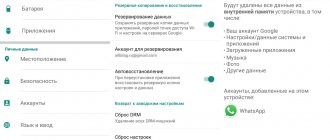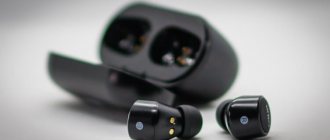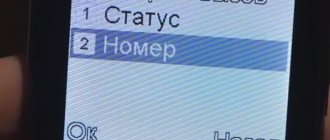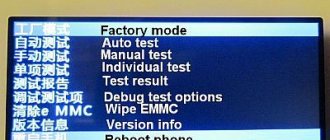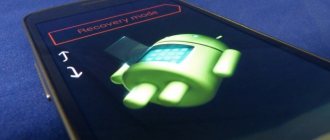Wipe programs
The most popular utility for Windows is CCleaner.
It has 4 data removal algorithms with varying degrees of thoroughness in getting rid of information. The user selects the type of cleaning (full or partial), the number of rewrite passes. The speed of the procedure is low and depends on the amount of data on the disk and the wipe algorithm. Program management is simple:
- After launch, select “Service”.
- Find Drive Wiper or “Erase” below.
- Define partial (only free space) or complete removal of everything, select the level of protection.
- Wait for the procedure to complete.
Another program is DBAN. It is less known, but also free and easy to use. Software has been developed for Windows, MacOS, Linux. The program cleans up the disk automatically or gives the user access to process settings. The algorithms here are the same as in CCleaner, but the software does not have a Russian language and a graphical interface. The selection of commands occurs by pressing key combinations: their options are written at the bottom of the window. Another disadvantage is that the program does not work with SSDs.
What is wipe in SAMP?
SA-MP is a multiplayer application that is designed to be played on. Essentially, this is GTA San Andreas, but with an online mode in which the participant can play the role of a bandit or a lawman. The data of each registered player is saved in the database, and everything that belongs to him (this is level, money, skin, car, house) is recorded in the database. Wiping on a server is far from uncommon, why does this happen? Users have been registering their accounts for a long time, and each new one is added to the database of a separate server. Many players (almost everyone) register more than one account, and it is very difficult to track this, which to a certain extent clogs the database. Its size reaches a critical value, and the data processing speed decreases significantly. Example: A participant makes a purchase by spending a certain amount of money. After one minute, he leaves the server, but due to overload, the database only remembers that he left, since this action is easier to process. The next time the player logs in, he will see in his account exactly the amount of money that he had left + the price of the property that he purchased (in other words, the amount of money before the purchase). At first, of course, he will be happy, but the happiness will be short-lived: he will realize that there is no property either - the account simply has not been saved. This rarely happens with good databases, but the very essence of the game in SA-MP is sometimes lost, because what incentive is there to play if one of the players already has a level 70+ account? It’s much more interesting when everyone is on an equal footing from the very beginning (wipes usually increase online by 20-30%, but this is literally for 1-2 weeks, then everything returns to its previous place)
Why do you need to perform a factory reset?
How to reset your iPhone quickly
Resetting your iPhone clears Android of your data and programs and may be needed for various reasons:
- If Android does not work correctly and critical errors often occur
- After obtaining Root Android rights
- After the firmware (transition from original firmware to custom firmware, OS update)
- In order not to disseminate personal data (when reselling the device and transferring it to other hands)
In the Android ecosystem, resetting settings is usually called wipe. The English word Wipe is to wipe, wipe. For many, the familiar word in this case will be formatting or format. So remember, Wipe in Android is a reset, formatting!
Another reason
This function may be needed if viruses have entered your phone. This usually happens due to installing applications from unverified sources, as well as unsafe Internet surfing.
Even if for some reason you need to constantly use the Internet, it is better to get an antivirus program. It may not be able to filter everything, but it will definitely stop the most dangerous viruses.
If malware has already entered the system, the antivirus program may not be able to remove them. They can also damage many system files, which can cause the smartphone to stop working correctly. There will be glitches and various types of errors.
In this case, you will again need to use Factory Reset.
Other reasons
A factory reset may be necessary if:
- Regular phone system failures, the reasons for which cannot be found.
- Selling a smartphone to another person. This way, it will be much easier to delete all your personal data in one fell swoop.
- Unsuccessful flashing or installation of a custom shell.
Function options
As mentioned earlier, there are several types of resets. A partial reset deletes individual partitions and folders, cleans the system and gets rid of files that can cause errors and crashes. In this case, photographs and documents remain untouched.
Wipe Factory Reset is a hard reset that helps you get rid of all files on your phone. It completely clears the system of settings and configurations, deletes accounts and all personal data of the user. In this case, there is practically no chance that viruses or malware will remain on the system.
What is this?
You may be interested in:Audi R8 v10: photos, specifications, year of manufacture and features of the car
This is the short name for a function that helps reset the system to factory settings. The process clears all files and settings that were previously set by the user. The smartphone becomes, from a system point of view, brand new.
The function destroys data from internal memory and microSD. All that will remain on the phone is a folder with system files that support the operation of the device.
But since this is a short name for the function, there is a full, so to speak, official name - Factory Data Reset. Translated, the phrase means “data reset.” This feature helps you quickly erase all files from your phone. But it does not do a full system restore.
To do this, you need to use the Wipe Factory Reset function. Translated, the phrase means “reset to factory settings.” This option helps to completely clean the system, leaving only one folder with service files in it.
What Is App Data on Android
How to reset BIOS settings
When you install an app, either from the Google Play Store or by sideloading a third-party APK How to Manually Install or Sideload Apps on Android
How to Manually Install or Sideload Apps on Android Want to sideload apps on your Android phone? Installing APKs manually on Android opens up a whole new world of apps, and it's easy to do. Read More
, the executable app file along with any necessary runtime library files are stored in the system's /data/app directory. This directory is inaccessible by file explorer, unless you root your device.
Each installed app also gets its own directory for private data, located in the system's /data/data directory. This directory is also inaccessible except by rooting your device.
As you use your various Android apps, certain settings and inputs get stored between sessions. For example, logging into an app and checking “Remember me” will store your details to private data. Data also stores things like account settings, app preferences, etc.
Some apps (like Spotify) may store offline audio data, while others (like Maps) may store offline map data. This can take up a LOT more storage space than you were expecting, so it can be useful to know how to wipe app data in case your storage space runs low.
How to Clear App Data on Android Phones
When you clear app data, you're essentially clearing all of the private data it has ever stored since you installed it and used it. In other words, clearing app data “resets” an app back to how it would be when first installed.
To clear app data for a specific Android app:
- Open Settings.
- Navigate to Apps.
- Tap on the app you want to clear.
- Tap on Clear Data.
How to clean your computer hard drive
Fastboot mode, what is it on Android and how to get out of it?
Microsoft and Apple install software with a full data reset function by default in every gadget. On MacOS this is “Disk Utility”, on Windows it is “Recovery”. There is another option: download a program that does wipe. Many of them are free and easy to use. This software will appeal to those who want to manually set the number of rewrite cycles (the more there are, the higher the chances that no one will recover the data) and make other settings.
MacOS
Before starting the procedure, it is recommended to copy all important data to iCloud or an external drive, and make a backup copy via Time Machine. Don’t forget about the “Keychain Access” – accounts and passwords: this will eliminate the need to re-enter account data. iCloud features, especially Find My Mac, should be turned off.
Wipe algorithm:
- Restart your computer. When starting, press the key combination Shift+Option+Cmd+R and hold until an apple appears on a black background. This will mess up the recovery partition.
- In the window that opens, select “Disk Utility”. When the program starts, click on the boot disk on the left. The default is Macintosh HD.
- Select "Erase" from the toolbar. In the window that appears, enter a new name for the disk and set the format to macOS Extended (journaled). If the original format was APFS, there is no need to change it.
- Confirm the action. Exit the program after completing the procedure, return to “Utilities”.
- After the wipe, select line 2 in the menu - reinstall macOS. The latest available version of the system will be downloaded from the Internet. If you are selling a computer, press Cmd+Q to leave these steps to the buyer.
Windows
If the system starts, the scheme is simple:
- Go to Start and Settings. Select "Recovery".
- The option “Restore your computer to its original state” will appear on the right. Below it there is a “Start” button, which resets the system.
- Follow the prompts to save important files or completely reset your computer's memory. Next, choose a simple data deletion or an absolute reset.
- Wait until the operation is completed: during this time, the computer will reboot several times and reinstall the system.
To see what a wipe is without a chance of recovery, the procedure is carried out through the BIOS:
- When you turn on your computer, press F1, F2 or Del frequently - the key depends on the specific device. Wait for the blue screen with the BIOS title to appear.
- Open the Exit tab, select Load Setup Defaults.
- Use the Y button to confirm the action and wait for it to complete. On modern machines this can be done even with the mouse cursor.
How to clear your smartphone's memory using programs
In order not to perform all cleaning operations manually, you can use the services of specialized software. In this article we will look at several that will really help your phone.
Clean Master
How to clear the internal memory of Huawei and Honor phones using Clean Master?
If you have any questions or complaints, please let us know.
- Open Play Store.
- Write Clean Master in the search field.
- Select the first program.
- Download it. It's free.
- Install.
- Launch it.
- On the main screen, select the cleanup option.
- Wait for the process to complete.
SD Maid
An analogue of the previous version is the more modern SD Maid. Unlike Clean Master, this one cleans not only internal components, but also formats external media.
App Cache Cleaner
App Cache Cleaner can be downloaded for free from the Play Market. The software also cleans internal and external unnecessary elements. Its distinctive feature is the prompt deletion of the cache - unnoticeable remnants or images stored in Explorer folders.
How to wipe data on hard drive in Windows 10, 8, 7?
Before you do
- Backup data which you don't want to wipe from the disk you are going to erase.
- A disk will become blank as soon as it has been wiped, by doing so, you can make the full use of this disk by re-partition it.
- If you need to wipe the system hard drive, you ask to restart into PreOS mode, or you can make a bootable device and do the clean in Windows PE mode.
Steps to erase data from hard drive completely
Step 1. This feature will erase a given hard drive to anti-recovery. You can select a hard drive which you want to wipe; right-click on it and choose “Wipe Hard Drive” option.
Step 2. Choose a wiping method to wipe the selected hard drive according to your requirements and click “OK”.
Note:
● Fill sectors with Zeros: Overwrite all sectors with zeros. It is common to wipe a personal hard drive. It is safe and fast.
● Fill sectos with random data: It overwrites hard drive with random data. It is more secure than the first one.
● DoD 5220.22-M: DoD standard is firstly published in the Department of Defense of the US It is much secure than “zero-filling” and “random data filling” and faster than the Guttman. Thus it is often adopted by companies and organizations.
Gutmann: It overwrites a hard drive with 35 passes. It is the safest way here, but it also takes the longest time.
Step 3. Click “Apply” in the tool bar to execute the operation.
Recovery menu in Chinese
Any device running the Android operating system has a special Recovery mode. Service specialists use it to test the operation of the smartphone and debug the installed software. An ordinary user resorts to the services of Recovery only in one case: when it is necessary to reset the phone settings to the factory state.
This operation is called Hard Reset and is used in the following situations:
- It is impossible to restore the functionality of a device damaged by installing new firmware or applications by other means;
- Pre-sale preparation of the device is carried out.
A hard reboot completely deletes all traces of the user's presence: the contact database, the message archive, all saved files and installed applications. Therefore, before resetting the settings, you need to back up useful information via a cloud service or simply to an SD card.
Conclusion
The wipe data/factory reset item allows you to completely clear the internal memory of your mobile device and return the system to its initial state. This function allows you to configure a smartphone or tablet from scratch, as well as solve problems with the performance and loading of the operating system. The formatting process permanently deletes all data, so it is important to first make a backup copy of important data.
How often do you have to reset settings and completely format your mobile device? Write a review in the comments below the article.
- Menu
Many phone users begin to notice that over time the device becomes slower. Programs take a long time to launch, close on their own and slow down. In most cases, the reason is that the smartphone’s built-in memory is full, which negatively affects the operation of the device. Cleaning it yourself is quite problematic - you need to manually delete each program and clean the remaining sections of the built-in memory.
The creators of the Android operating system have provided the ability to completely reset the smartphone through the Recovery menu - Wipe data factory reset. This function will allow you to completely clear your phone of all files in a few steps.
Login via ADB
Android Debug Bridge is a program for Windows with which you can put your smartphone or tablet into Recovery mode. To do this you need:
- Download and unpack to the path C:\adb.
- You need to launch the command line (press Win+R and enter CMD). Next you should enter the command cd c:\adb.
- Connect the gadget to your computer (PC). But before that, check whether USB debugging is enabled in the device settings.
- As soon as Windows recognizes the connected device, enter the adb reboot recovery command in the window. The device will reboot and Recovery will begin downloading.
This method is not very convenient, but it gives an almost guaranteed positive result.
Solution waiting for device in ADB
1
The first thing you should pay attention to is whether you have the driver installed? You can download the driver on this page, find out how to install on this link
If the driver is unsigned, then Windows must be restarted by disabling verification. Certain devices require a special ADB driver
You can download the driver on this page, find out how to install it on this link. If the driver is unsigned, then Windows must be restarted by disabling verification. Certain devices require a special ADB driver.
Have you installed the driver? Restart your computer!
2. USB Debugging is not enabled! If you do not have USB debugging enabled, then working in ADB is not possible!
It is also worth noting that with Android 4.2 and higher, you must confirm trust in the connected computer on the device!
3. ADB only works when your Android is turned on!
4. Use an original and undamaged microUSB cable! Everything should be clear here, if the cable is damaged, hence the problem of visibility, perhaps you can transfer or receive files from this cable, but you won’t be able to work with ADB! Also, do not use a damaged USB port on your computer!
5. Use only USB 2.0 port! Despite the fact that the USB 3.0 standard has already existed for several years, it is still too early to talk about large-scale implementation. Working ADB with USB 3.0, although possible, is still not desirable!
6. Do not use USB hubs! Never, under any circumstances, use USB hubs; working with ADB becomes like luck - you'll be lucky or unlucky.
7. Try connecting Android to a different USB port.
9. Open a command prompt as “administrator”.
Recovery in Chinese: reset, translation, decryption
Recovery is a software recovery mode built into the operating system of the device (tablet, smartphone, desktop computer). Using the program allows you to reset settings, copy information, and eliminate operational errors.
Recovery in Chinese
Devices made in China are equipped with a system menu in the manufacturer's language. For ease of use, you need to compare the recovery menu items in Chinese with standard items that are identical in content and set of functions.
To call the recovery menu you need to:
- Power off the device
- Press and hold the power and volume up keys at the same time
- Holding the buttons will turn on the device and display the required mode
The user can move up and down through the settings using the volume buttons; to select a specific action, use the home button.
The main sections of the recovery system menu in Chinese correspond to the standard translation:
- Auto Test – checking the basic parameters of the operating system and testing it for errors
- Wipe eMMC – hard reset of all parameters and settings of the smartphone without the possibility of recovery
- Reboot - reboot
- Version info – help
- Mounts with Storage – gadget memory management, information about the amount of free space or formatting
- Wipe Cache Partition - clearing the cache
- Wipe Cache Partition – copying all existing information
- Factory Reset - restoring factory settings
To exit the settings, just press the power off button.
Hard reset (hard reset)
To restore the device to factory settings, perform a hard reset. This item can be accomplished in two ways - in the menu and, for cases when the smartphone does not turn on, using a key combination.
- Select "Settings"
- Activate "Backup and Reset"
- Additionally, click on “Reset settings”
For those cases when the device does not turn on or the Russified menu is not available, a hard reset on a Chinese phone is performed through rakveri or by pressing the “Power” + “Home” + “Volume Down” buttons, then select wipe.
Performing a hard reset will delete all the user’s personal data from the gadget’s memory.
Wipe data factory reset
Resetting the settings on a Chinese device Wipe data factory reset allows the user to clear the cache, remove installed applications and errors caused by their operation, while saving media files - music, photos, images.
Xiaomi recovery mode
You can call up the recovery menu on Android OS on a Xiaomi device by following the standard sequence of actions. Turn off the smartphone, then simultaneously hold down the volume up, home and power buttons. The volume up/down buttons are used to move through items, the power key is used to select or activate one of the actions. In this mode, it is possible not only to return to factory settings or restore functionality, but also to update the TWRP, CWM system folders.
Factory mode
On Android, in the system recovery menu you can not only reset, but also test the phone’s operation in the Factory mode item. It is represented by several subparagraphs, deciphering their meaning in Russian:
- Full Test – all phone parameters are checked
- Item Test – custom scan
- Signaling Test – SIM card and signal level test
- GPS – diagnostics of the correct operation of the location system
How to reset settings on Android
In order to reset settings on Android, you need to activate the system recovery mode and select Hard reset in it. To perform a hard reset on a Chinese device, you must first copy all the important information to another device. Decoding of all recovery points is standard for most models - Lenovo, Samsung, Xiaomi.
Recovery allows the user to roll back the Android operating system to the factory version and clear all available memory of the smartphone. Using the Wipe data factory reset item, it is possible to save media files after resetting. System functions make it possible to restore the operation of the smartphone and remove unnecessary applications that cause crashes and errors. On Chinese phones, items are described in the manufacturer's language or in English. To decipher the points, you must follow the instructions, which are the same for most Lenovo (Lenovo) and Xiaomi models; for this reason, translation is not required.
Clearing the cache using Recovery mode
In general, if you look at it more specifically, this is not the only built-in cleaning tool. In the Android OS itself in Recovery mode there is an option “Wipe Cache Partition” (clear the cache partition). When errors appear while working with your phone, especially those that lead to a reboot or freezing of the system, you have to start the recovery process. Recovery Mode is also needed in cases where you need to reset the password assigned to lock the device, etc.
There are two types of cache on Android devices - application cache and system cache. Each application that is installed on a smartphone has its own cache, which stores the data required for operation. System refers to the Android OS as a whole. It stores scripts and files that are (or were) needed to execute system processes. Since there are two types of cache, there will also be two ways to clear it.
What is wipe on Android
All owners of Android devices at some point have encountered the fact that their phone or tablet begins to respond more slowly to commands, freezes, or ignores pressing the sensor. The most common reason for this behavior is a dirty cache. This is a kind of auxiliary memory area where temporary files are stored. The problem with Android is that after this data is no longer needed, the OS does not delete it completely, but only compresses it and marks the partition as “free”.
Unlike online gamers, an Android phone user can independently clean the device of information garbage. This process is also called a factory reset.
It is important to remember that after a wipe, all settings and data stored on the phone will be lost. Separately, it is worth noting that most smartphones have the ability to wipe the cache without losing settings (commands are launched from the hardware menu, which is activated by a combination of buttons, which is individual for different device models):
- factory reset, wipe data (synonymous terms) – total removal of files, all user data, reset settings;
- cache partition (user data complete save) – clearing the cache of used applications without losing settings;
- dalvik cache – clears the cache of applications enabled on the phone.
General description of the problem
As mentioned above, each application during its operation uses some temporary files, which are stored in a special section of the system called the cache. It's interesting to note that these files may remain there even after the application itself has been uninstalled. For technically savvy users, this problem is obvious and they regularly clean up temporary files, however, most people do not do this, which sooner or later leads to problems.
Problems of Chinese smartphones
On devices made in China, the Recovery menu is often displayed in Chinese. This creates additional difficulties for users, which, however, are completely surmountable.
First of all, we must determine whether Recovery mode is actually running or whether the screen is simply displaying some debugging information. To do this, look carefully at the beginning of the first line. The first two hieroglyphic symbols are very similar to a combination of capital letters: the Latin “I” with elongated horizontal upper and lower elements and the Russian “G”. Therefore, if the text on the screen begins with “ІГ”, we are most likely in the right place.
The second evidence that this is the Recovery menu, albeit in Chinese, is the presence of the Latin characters “MMC” in the seventh line. These three letters complete the text of the line.
If the indicated signs are absent on the display, some other system procedure is probably running, and not Factory Mode. In this case, turn off the mobile device and try to re-enter Recovery mode using a different key combination.
Reset options
Android allows you to do a Wipe Data Factory Reset in three ways:
- through phone settings;
- through the Recovery menu;
- through a special button on the smartphone.
The easiest way is through your phone settings. But sometimes a system failure does not even allow you to turn on your smartphone, so you have to use other options. It is also easy to reset with a special button, but this is not so common on modern models.
Peculiarities
In English, wipe is translated as cleaning, wiping, and if you see it in the gadget settings, always remember that this is formatting and hardly anything else. There are two types:
- Full wipe - selecting this action will completely clear and format both built-in and removable memory.
- Partial wipe - helps to delete individual sections and folders, performing a cleaning operation so that this does not lead to malfunctions and failures in the future.
On Android there are three ways to use it:
- through the options menu;
- using Recovery;
- thanks to a special reset button, if available.
The first and third methods are considered to be the simplest, because they do not take even a few minutes. As for the second, it takes longer, but is reliable.
Types of wipe on Android
Wipe on Android can be divided into full and partial.
Full wipe - completely deletes all data on the partition.
Partial wipe - deletes a specific directory (folder) on a partition.
Which modes can you use to Wipe on Android?
- From the settings menu (normal boot)
- From the Recovery menu
- From the Bootloader menu using fastboot
- Using the hardware reset button (if available)
What can you do in Factory Mode?
Using Factory Mode is available to the user at any time. It is possible to test any component of the smartphone, up to rolling back the Android operating system. Factory settings mode is useful because it can bring the phone back to life if the OS update fails.
In addition, the user can conduct tests of gadget elements to check their performance, as well as measure the performance of the phone’s sensors.
Switching to factory mode allows you to change such technical characteristics of the device as:
- sound;
- sensitivity of touch elements and mechanical buttons;
- Android operating system;
- memory;
- backlight brightness.
In addition, clearing the cache and flash drive and calibrating the device will become available.
Menu items
Factory mode has two language packs: English and Chinese. The English interface is considered the most common. Depending on the phone brand, the factory mode has a different menu.
Below are the main points that the user will encounter on every smartphone:
| Item name | Meaning |
| Auto Test (Full Test) | Full check of the smartphone, where all components are tested |
| Item Test | Selective testing of one smartphone component |
| GPS | Checking modules responsible for location |
| Clear eMMC/wipe data/factory reset | Reset all settings to factory defaults |
| Debug Test | Checking for errors with further correction |
| Test Report | Check Reminder |
| Reboot |
At the end of the test, two message options may be displayed:
- test pass – successful;
- test fail - unsuccessful.
Why do you need to do a Wipe data factory reset?
The term Wipe itself means “to wipe” or “to erase.” Thus, using the Wipe data factory reset function, you can restore your smartphone to factory settings and completely clear its memory. It is important to note that this procedure entails the complete deletion of all applications, photos and other data contained in the built-in memory. Information stored on the memory card (photos or music) will remain, but it is recommended to remove the microSD just in case. If the data stored on your smartphone is important, copy it to your computer, flash drive, cloud storage, or backup.
Today, many service centers offer to solve such a problem for a small amount of money, but in most cases visiting a workshop is pointless - you can do everything yourself. First, go to the Recovery menu - you need to turn on the device with the volume and power buttons pressed. Navigation through the menu is carried out using the volume buttons, and selection is carried out using the power button.
The Wipe data factory reset function in some cases will speed up the operation of the mobile device, but the user will have to re-install the necessary applications, log in to accounts and configure the system.
- Recovery in Chinese (what to do and how to fix or translate?). Recovery in Chinese
It is recommended that you think carefully about the need to perform the procedure. If the device constantly freezes or does not launch programs, it is simply necessary. To clear memory and reset settings, you will need to perform a certain sequence of actions. First, make sure that the gadget’s internal memory does not contain important data.
At the moment, we will try to understand the question of what the term factory reset means and how to perform this function on your phone. The article will be useful to Android users who have encountered problems with the OS.
Subtleties of performing wipe on Android
Many users are wondering when to reset the settings - before flashing the device or after? The answer is obvious - it’s best to wipe before, since many firmwares include a built-in function for automatically rebooting the system after installation.
In the case where the firmware has wipe files uploaded in the data section, you need to pay attention to how the system will function after loading; if it’s bad, run wipe data
A little about other subtleties when performing a factory reset on Android
Based on the observations of many experts, it became clear that a feature of the popular custom firmware CYanogenMod is a script that is part of the installation process from the recovery menu. This script initially backs up the system files, and then, after the flashing is completed, restores them. As a result, errors may sometimes occur. Therefore, if you decide to use the CyanogenMod firmware, and also have an idea of what an updater-script is and that it contains the script that performs this backup, then before starting the firmware process you should perform format system. That's all.
Most online players are familiar with the server reset process. This is the moment when all achievements, progress and development of the game are reset, and everything needs to start from scratch. The same process can and should sometimes be carried out on your phone. What is a wipe for Android? It is a total clearing of the cache, settings, deletion of any information, and a complete return of the device to the basic factory settings.
Preparing for a factory reset
Those who are interested in what wipe is on Android should first of all install the FRP (Factory Reset Protection) application. Google developed FRP as an additional layer of security for Android 5.0 Lollipop. If the gadget is stolen, the program will not allow thieves to erase all files on it for the purpose of further sale to third parties.
If you perform a wipe data/factory reset with the FRP application enabled and try to set up the device again, the program will require you to enter the username and password for the last Google account registered on the device. If a person does not have such data, then the smartphone will remain locked. Attackers are unlikely to be able to sell a mobile device that doesn’t even run the operating system.
After installing FRP, you need to perform the following steps:
Recovery errors
Sometimes there is such a common error in Android System Recovery 3e as canceling the installation of the firmware or package. It can occur for several reasons: the firmware file is damaged, incorrect information in the binary file, or the firmware simply does not suit this device. But there is another option: before flashing the firmware, the device was not reset to factory settings. It’s good that they can be easily fixed in the same recovery. There are several ways to do this.
So, if the error occurs due to a broken firmware file, then you should download it, connect your smartphone to the computer, go to the Mount & Storage menu item and select Mount USB Storage. After this, you can copy the firmware again to the root of the memory card. If you forgot to “wipe”, then there is nothing easier than moving a few levels higher and selecting the appropriate menu item. But the Android System Recovery 3e error “No command” is very rare. It only appears when the user tries to install an update via ADB. Usually this method doesn't work. As a result, this error appears. So there is no point in using this method. Nothing will work anyway.
What kind of animal is this?
What does Android System Recovery 3e mean? This is a kind of BIOS of a mobile device. Any operating system has its own BIOS - a basic input/output system that can work even if the main OS is damaged. Sometimes the BIOS is different from the standard one (as, for example, in Android devices). It is used to restore the functionality of a smartphone or tablet, apply critical updates or reset to factory settings. The Android System Recovery 3e menu has many items that correspond to one or another action. But the trouble is that the names are written in English. Therefore, many people do not even know how to use recovery correctly.
That is why this article was written. Android System Recovery, the instructions for which are absolutely necessary, is a powerful tool for setting up and resuscitating a smartphone. You need to know everything about how to use this recovery in order not to waste money on specialists. Doing everything yourself is much easier and cheaper. We will analyze each item in the recovery menu and tell you everything we can about it. So let's begin.
Why reset settings on Android
Just recently, a smartphone was just off a store shelf, so clean and untouched. A few days passed, and it was filled with familiar applications, music, old and new photos. You've connected your Google account, and all your calendars, contacts, notebooks, even your search history and favorite places on maps are back. But all this gives rise to errors. The phone is quickly running out of space (and large memory cards don’t help). Sometimes there are software glitches that cannot be easily fixed
There is only one way out: return Android to factory settings. Often this helps restore your smartphone after a critical failure or eliminates lags and delays in operation. There are other reasons for resetting: you want to sell or give away your smartphone
Then it is important that no personal data remains on it. The best way to clear it is a hard reset
Preventive action
Create a new folder in Android. ways to create folders on Android smartphones and tablets. creating a folder on a memory card or in the gadget’s memory
What are wipes (Android)? It turns out they can be useful. As a preventative measure, the developers recommend that all owners of Android mobile phones periodically clean it in order to avoid clogging it with unnecessary virtual waste. There are exactly three types of wipe: Factory Reset, Cache Partition, Dalvik Cache. Each reset clears some part of the memory in different parts.
After that you have to select the option. In this section, you will find the option to Reset Factory Data, which you must confirm to begin the process. Once you do this, you will not be able to give up and you only need a little patience to complete the process. Once this is done, your phone will look like new.
Thus, the user can restore his data at any time without the risk of loss. To do this, you only need to register one of the two services so that after the factory reset is completed, you can reset the hardware data. There you will find some switches next to the items you can backup to, you have to activate them and click on the “Backup Now” button.
Cleans the entire phone and resets all user settings to factory settings.
Cache Partition - produces a complete set of used applications on the phone, but the user’s personal data is not affected.
Dalvik Cache - clears the cache of applications enabled on the phone, and custom ones do not suffer.
Recovery Menu in MIUI and Android One
The menu in stock Recovery Xiaomi is divided into several levels. At each level there is a certain number of points in English. Therefore, it is worth taking a closer look at the translation and purpose of each menu item and tell us what it is used for.
Structure of the Recovery Menu and its translation into Russian:
- Reboot—regular reboot of the device. There are 2 reboot options available: Reboot to System (reboot to MIUI) or Back to Mai Menu (return to the previous menu).
- Wipe Data - allows you to clear all user data. It is the Wipe Data menu that is used if you need to reset your smartphone to factory settings. It also has 2 sub-items: Wipe All Data (delete all data) and Back to Main Menu (return to the initial screen).
- Connect with MIAssistant - allows you to connect your smartphone to your PC to restore the system. You will need a USB cable, a special program on your PC and a downloaded firmware file. There are corresponding instructions for working in this mode. If you are interested, write in the comments, we will tell you more about it on miboom.ru.
Main Menu home screen on Xiaomi with MIUI.
The image above shows the recovery menu of a MI brand smartphone, as indicated by the inscription Mi Recovery 3.0. If it were a Redmi phone, then we would see Redmi Recovery 3.0. Apart from this inscription, they are no different.
In Mi A series smartphones - A1, MI A2 (A2 Lite), Mi A3, the recovery is different from the standard version of other Xiaomi phones. This is due to the fact that the A-series comes with pure Android One, while the rest of the devices use MIUI.
Structure of the Recovery Menu for Xiaomi A-series smartphones:
- Reboot system now starts a reboot into the OS.
- Reboot to bootloader - selecting this item will reboot the phone into Fastboot mode.
- Apply update from ADB - starts a firmware update using a computer and a USB cable.
- Apply update from SD card - starts an update from an external memory card. You can install firmware from a flash drive through recovery only on Xiaomi A-series smartphones. On other phones, installation is possible only from the internal memory of the device.
- Wipe data/factory reset - reset to factory settings (Hard Reset).
- Mount /system - mount the system partition for manual manipulation with it.
- View recovery log - after selecting this item, recovery logs will appear on the screen. This is needed to diagnose errors.
- Run graphics test - the command starts a test of the smartphone's on-board graphics adapter.
- Run locale test - starts checking the phone's language and region.
- Power off—the item is used to turn off the phone’s power.
Recovery Menu on the Mi A3 smartphone.
The recovery in Xiaomi A series is much more functional than that used in MIUI. You also need to enter this mode: hold down the power button and volume up. You need to release the buttons when a picture with a disassembled robot and a red triangle appears on the screen.
Preventive action
What are wipes (Android)? It turns out they can be useful. As a preventative measure, the developers recommend that all owners of Android mobile phones periodically clean it in order to avoid clogging it with unnecessary virtual waste. There are exactly three types of wipe: Factory Reset, Cache Partition, Dalvik Cache. Each reset clears some part of the memory in different parts.
Cleans the entire phone and resets all user settings to factory settings.
Cache Partition - produces a complete set of used applications on the phone, but the user’s personal data is not affected.
Dalvik Cache - clears the cache of applications enabled on the phone, and custom ones do not suffer.
System recovery and how to clear the application cache
For a more complete understanding of the issue, it is worth considering such a section of the system as Recovery. In simple words, this is the second bottom of the system, which allows you to perform a number of basic actions with it. Most often, recovery is used to change the device firmware, backup or restore the system, and similar actions. The application cache is also cleared through recovery.
In order to enter the recovery menu, you must simultaneously hold down several buttons on your smartphone. Most often, this is by simultaneously pressing both volume change keys and the device power off key. So, the algorithm of actions should be as follows:
- Turn off your smartphone.
- Simultaneously hold down the volume rocker (both keys) and the power button. Hold until the characteristic splash screen appears.
- In the recovery menu that appears, find the Wipe Cache Partition item and activate it. (Switching usually occurs using the same volume rocker, and selection with the power button).
- After clicking on the menu item, the display will show the actions being performed and upon completion will confirm the success of the work.
- Next you need to choose to restart or turn off the device.
After the device is rebooted, it will be cleared of traces of applications. This applies to both installed programs and those already uninstalled. As a result of the Wipe Cache Partition procedure, the operating system and applications will run faster. The procedure should be repeated periodically, especially if you have to frequently install and uninstall applications. In any case, preventing a problem is better than fighting it.
This article will describe in detail the process of resetting settings on the Android operating system, describing in detail all the options and their nuances.
Why is a factory reset necessary?
After resetting the settings, the Android device is completely cleared of user-preinstalled programs. This process can solve the following problems:
● Incorrect operation and occurrence of system errors
● Occurrence of malfunctions after obtaining root rights
● Problems after flashing, namely the transition from original firmware to custom firmware
● Poor performance after operating system update
● To delete personal data when selling the device
Resetting settings in the Android system is called wipe, which translated from English means to wipe, wipe. Many people are familiar with a similar term called formatting. In fact, they are the same process.
Types of hard reset
Resetting settings on Android OS can be divided into two types - full and partial. The first deletes all data and programs on the device or selected partitions. The second allows you to delete a specific directory, that is, a folder.
Modes from which you can perform wipe on Android
● Settings menu●
Recovery
●
Bootloader
.
fastboot
tools ● Using the hardware reset button, if provided by the developers
What is cache programs in Huawei
If an application on Huawei is full of cache, it starts to malfunction: it won’t start, an error with different codes appears, and it works slowly. Mobile applications work faster due to downloaded data from the network. For example, in the Google Maps application, when you view your location, the application loads a map of that area into the cache. So that the next time you launch it, it can quickly show it to you.
Sometimes maps can even work without the Internet precisely because the map files are already in the cache. But if this storage is full, the program will have nowhere to put map files of other areas. If you suddenly want to look at the Eiffel Tower. You can also delete the cache files of an individual program in the “All programs” section, where we deleted applications without the Internet. There will be a “Clear cache” button in the program window. Click it and confirm deletion. And also use other ways to clear the memory on your Huawei mobile phone.
All information that is saved in the phone is recorded in the device's internal memory (ROM). What kind of information could this be?
- Phone data, that is, mobile applications.
- Data related to the applications themselves.
- System and user files, media files, documents, etc.
Everything we usually store on our phone takes up space. And if a smartphone has been used for more than a year, more and more information accumulates in it. And this is one of the factors contributing to the rapid filling of internal memory. It turns out to be overcrowded, there is not enough of it. But the cache can be cleared, it's not difficult. However, the result will be noticeable almost immediately.
